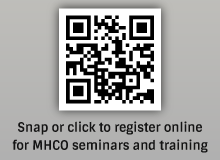By Phil Querin and Bill Miner
For a list of counties, and the phased guidelines, go to link here: https://govstatus.egov.com/reopening-oregon#phase1.
COVID was never a threat contemplated under Oregon landlord-tenant law. Accordingly, landlords cannot be said to be guarantors against the virus attacking their residents. Furthermore, rental agreements that promise certain amenities also did not contemplate COVID and may be used by some residents to attack a landlord’s desire to protect against the virus. We understand that some residents are pushing landlords to reopen common areas. and the below is being as some guidance. If you have residents that are threatening or making demands, you should work with your individual legal counsel to determine the best response.
As park common areas are being opened, we need to look at what protections landlords can put into place to address the risks that arise when residents congregate in groups.
Here is a short list; much more detail is found on the attachments (attached above) this article.
- If the area is enclosed, the size of the facility will dictate the number of persons who may congregate there;
- If it is an indoor recreational facility, numbers must also be observed;
- The use of shared equipment must be monitored for social distancing (6 feet), and for frequent sanitation;
- Certain areas, because of limited size, may have to be blocked off or have controlled access;
- Library facilities will need to be limited in number of persons, seating, and distancing;
- Personal protective equipment (masks, gloves, sanitizers) should be encouraged (or required) for all users; or disposable ones could be provided by management;
- If the area is not enclosed, social distancing must still be observed;
- If the area is recreational, personal contact activities should be avoided
As guidance, you may consider following state requirement for private facilities: Recreational, Children’s Camps; and Outdoor Facilities.
Perhaps most important is signage which should be developed and posted in all common areas including the management office. Signage should contain, at a minimum, the following caveats:
- Warning against coming to the common area if you are ill, have a temperature, cough, or shortness of breath;
- Observe social distancing, except families living together;
- Use protective masks;
- Use protective gloves, where appropriate;
- Observe etiquette when coughing or sneezing;
- Avoid physical contact;
- Engage in frequent and thorough hand washing with soap and running water for at least 20 seconds;
- Carry portable hand sanitizers;
- Avoid frequent touching of hard surfaces inside the room.
The above suggestions are just a starting point. Again, park management should consult with its own legal counsel for more thorough detail.
